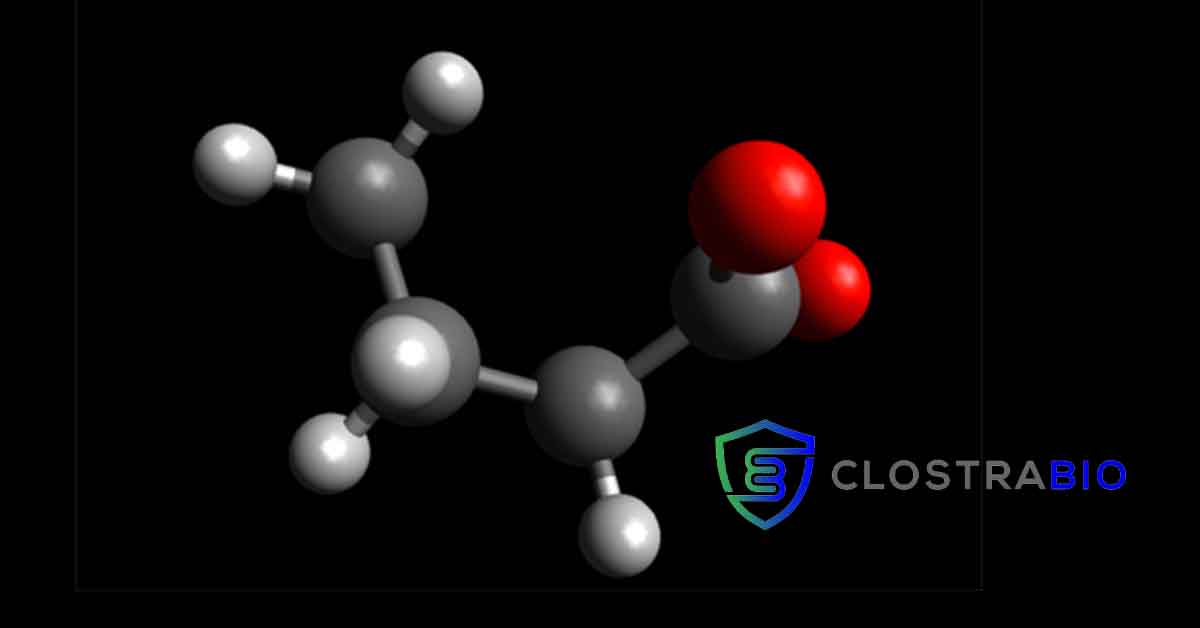Micelle technology is potential platform for treating other allergies, inflammatory gastrointestinal diseases
The gut microbiome plays a significant role in the immune system’s tolerance of potential food allergens, such as milk or peanuts. Research has shown that certain bacteria can protect against food allergies by preventing antigens from entering the bloodstream.
Now, a group of researchers at the University of Chicago have created a special type of polymeric molecule to deliver a crucial metabolite produced by these bacteria directly to the gut, where it helps restore the intestinal lining and allows the beneficial bacteria to flourish.
The research demonstrates that these polymers, called micelles, can be designed to release a payload of butyrate, a molecule that is known to help prevent food allergies, directly in the small and large intestines.
When given to mice, these micelles increased the abundance of butyrate-producing Clostridia bacteria, protected the mice from an anaphylactic reaction to peanuts, and reduced the severity of symptoms in a model of ulcerative colitis.
The micelle technology can be adapted to deliver other metabolites and molecules, making it a potential platform for treating other allergies and inflammatory gastrointestinal diseases.
“We were delighted to see that our drug both replenished the levels of butyrate present in the gut and helped the population of butyrate-producing bacteria to expand,” said Cathryn Nagler, the Bunning Family Professor in the Biological Sciences Division and Pritzker School of Molecular Engineering at UChicago and a senior author of the study, published in Nature Biomedical Engineering in December 2022,
“That will likely have implications not only for food allergy and inflammatory bowel disease, but also for the whole set of non-communicable chronic diseases that have been rising over the last 30 years, in response to lifestyle changes and overuse of antibiotics in our society.”

Butyrate can’t simply be placed in a pill
Millions of Americans suffer from food allergies, including up to 8% of children. The only way to avoid dangerous allergic reactions to problem foods is strict avoidance, which can be difficult to manage outside the home in school settings or restaurants, so researchers are still searching for treatments to prevent food allergies from developing in the first place.
Over the last several years, Nagler’s group has zeroed in on the potential of Clostridia and butyrate to treat food allergies. In 2014, her team showed that Clostridia caused immune cells in the gut to produce high levels of interleukin-22 (IL-22), a signaling molecule that helps decrease the permeability of the intestinal lining, preventing food allergens from entering the bloodstream and triggering an aggressive immune response.
Later in 2019, Nagler and colleagues from Italy showed that intestinal bacteria from healthy individuals can prevent food allergies. They transplanted gut microbes from healthy human infants into germ-free mice, which protected the animals from developing an allergic reaction to cow’s milk, while gut microbes from infants who were allergic to milk did not offer the same protection. This study also pinpointed a particular species of bacteria, Anaerostipes caccae, a butyrate-producing member of the Clostridia class.
Another study from 2021 looked at pairs of twins in which one was healthy, and one was allergic. Again, the healthy individuals had an abundance of Clostridia bacteria. “Every way we looked at it from a lot of different angles kept pointing back to butyrate-producing Clostridia. So, we looked at butyrate as a potential metabolite to modulate disease,” Nagler said.
The problem is that you can’t just put butyrate in a pill and hope it does the trick. In its basic form, it has a foul and lasting odor and taste. Orally administered butyrate is also absorbed in the stomach before it gets to the intestine where it is needed, and the body metabolizes it too quickly to have a therapeutic effect. To solve this delivery problem, Nagler began working with Jeffrey Hubbell, the Eugene Bell Professor in Tissue Engineering at the Pritzker School of Molecular Engineering.
Hubbell specializes in designing materials that assemble in new ways to interact with the body and the immune system. His team developed the micelles that combine butyrate with polymers, creating a delivery mechanism that can be suspended in water, travel through the stomach, and release butyrate in the gut. They also discovered that neutrally charged micelles release butyrate in the small intestine, and negatively charged micelles release it in the colon, allowing even greater control over delivery.
“It’s a very flexible chemistry that allows us to target different parts of the gut.”
Jeffrey Hubbell, Eugene Bell Professor in Tissue Engineering at the Pritzker School of Molecular Engineering
Once in the gut, the butyrate micelles helped repair intestinal barrier function in the mice. When mice that were allergic to peanuts were treated with the butyrate micelles, they did not have an anaphylactic response when presented with a peanut challenge. The micelles also decreased the severity of symptoms in a mouse model of colitis.
“It’s a very flexible chemistry that allows us to target different parts of the gut,” Hubbell said. “And because we’re delivering a metabolite like butyrate, it’s antigen-agnostic. It’s one agent for many different allergic indications, such as peanut or milk allergies. Once we begin working on clinical trials, that will be a huge benefit.”
Nagler and Hubbell co-founded a company called ClostraBio to further develop the butyrate micelles into a commercially available treatment for peanut allergies. They are working with the Food and Drug Administration on an investigational new drug application and hope to begin clinical trials in patients with moderate ulcerative colitis within the next 18 months. Once they show that butyrate micelles are safe and effective, they hope to expand the technology for other indications as well.
“It’s very unlikely that butyrate is the only relevant metabolite, but the beauty of this platform is that we can make polymers with other microbial metabolites that could be administered in conjunction with butyrate or other therapies,” Nagler said. “So, the potential for the polymer platform is pretty much wide open.”






